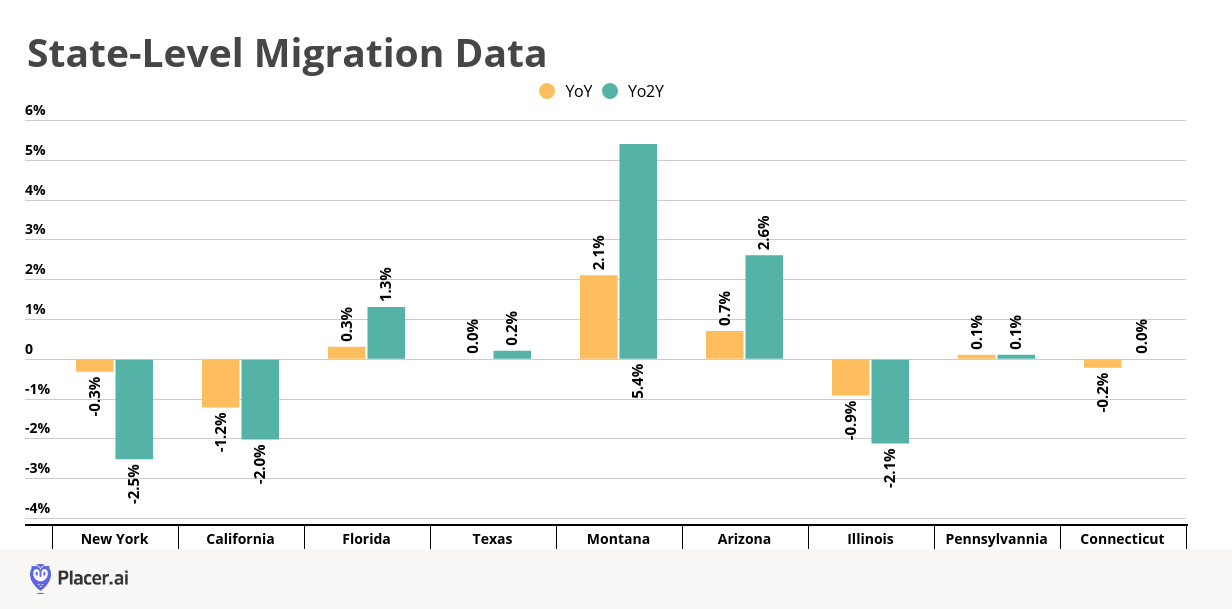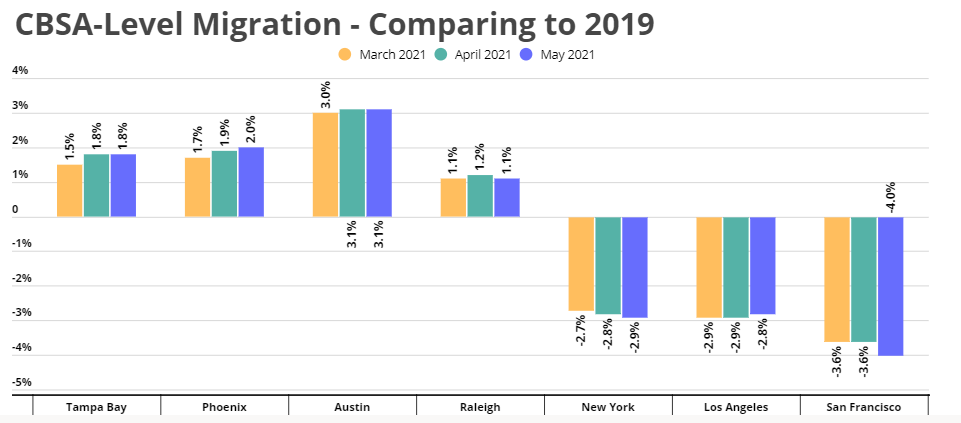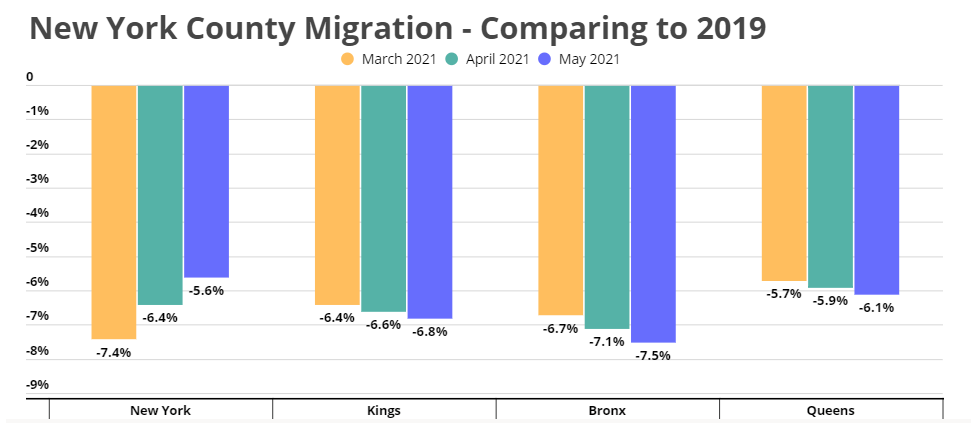
While there are many COVID-driven trends that will likely fade as the pandemic does, one that could have a significant long-term impact is the fundamental disruption to migration patterns. Already in the early stages of the recovery it was clear that something had shifted, with far reaching implications to retail, office, and residential real estate.
So where do things stand today?
State-Level Migration – Limited Net Shifts, Significant Trends?
Looking at state-level migration patterns reinforces the idea that moving is a large-scale, expensive, and difficult endeavor. States that should have seen the most significant impact – like New York and California – saw overall declines of just 2.5% and 2.0% respectively when comparing May 2021 to May 2019. This is a limited loss considering a wider narrative that suggested potentially major swings.
Nevertheless, there still were shifts, with some areas benefiting from the change. Arizona and Florida saw increases of 1.3% and 2.6% respectively in May 2021 when compared to 2019, while Montana saw a jump of 5.4% in that same time frame. Although there are likely several key driving forces to these changes including retirement and a push to more attractive climates, the work-from-anywhere impact cannot be discounted, especially considering where much of the movement is coming from.

CBSA Level – New Cities to Watch
While calling excitement around a city like Austin ‘new’ is a bit of a stretch, there is a clear trend that is benefitting several rising cities. The Tampa Bay, Phoenix, and Austin CBSAs all saw net population increases in March, April, and May 2021 when compared to 2019, with consistent improvements month to month. The potential takeaway is that the areas not only succeeded in attracting an initial wave of new residents, but turned that shift into an ongoing trend.
At the same time, major CBSAs like New York and San Francisco saw the opposite pattern with 2019 comparisons getting worse month over month. And while there is ample evidence that many of these cities will see a strong revival, the shift should not be minimized.

Looking at net migration patterns between San Francisco and other major CBSAs – several of which are key or growing tech hubs – deepens this point. San Francisco saw more residents leaving for major cities like New York, Phoenix, Seattle, and Austin than coming from those areas. While these are not massive population shifts, even small changes in a highly competitive professional market like San Francisco can be hugely significant. The spread of potentially high-skilled professionals who are in ever increasing demand may create opportunities for businesses centered in these other cities or add further fuel to a growing ‘work from anywhere’ trend. Whether this change cements the shift to work from home, opens opportunities for flexible co-working models, or gives rise to more hub-and-spoke office spaces – the effects on the office and retail sector could be massive.

The City Opportunity
Yet, it is still far too early to ring any alarm bells for major cities like New York. Looking at migration data for New York County compared to surrounding counties, shows the powerful pull that the city has and puts the shift taking place into context. While New York County – the heart of Manhattan – is seeing a consistent shrinking of the resident gap, surrounding areas like Queens, the Bronx and Brooklyn are experiencing growing declines. The likeliest scenario is that drops in rental prices, even if only short term, brought those who had been living a degree of magnitude away from the city because of costs, into the heart of New York.
This change, even if only slight, could have major implications for retail, and actually deepen a city like New York’s role as a ‘center of orbit’. The data suggests that much of the situation in New York should be seen more as a shake up of residential mixes than a fundamental long term change.

To learn more about the data behind this article and what Placer has to offer, visit https://www.placer.ai/.







Sign up to receive our stories in your inbox.
Data is changing the speed of business. Investors, Corporations, and Governments are buying new, differentiated data to gain visibility make better decisions. Don't fall behind. Let us help.













Sign up to receive our stories in your inbox.
Data is changing the speed of business. Investors, Corporations, and Governments are buying new, differentiated data to gain visibility make better decisions. Don't fall behind. Let us help.





